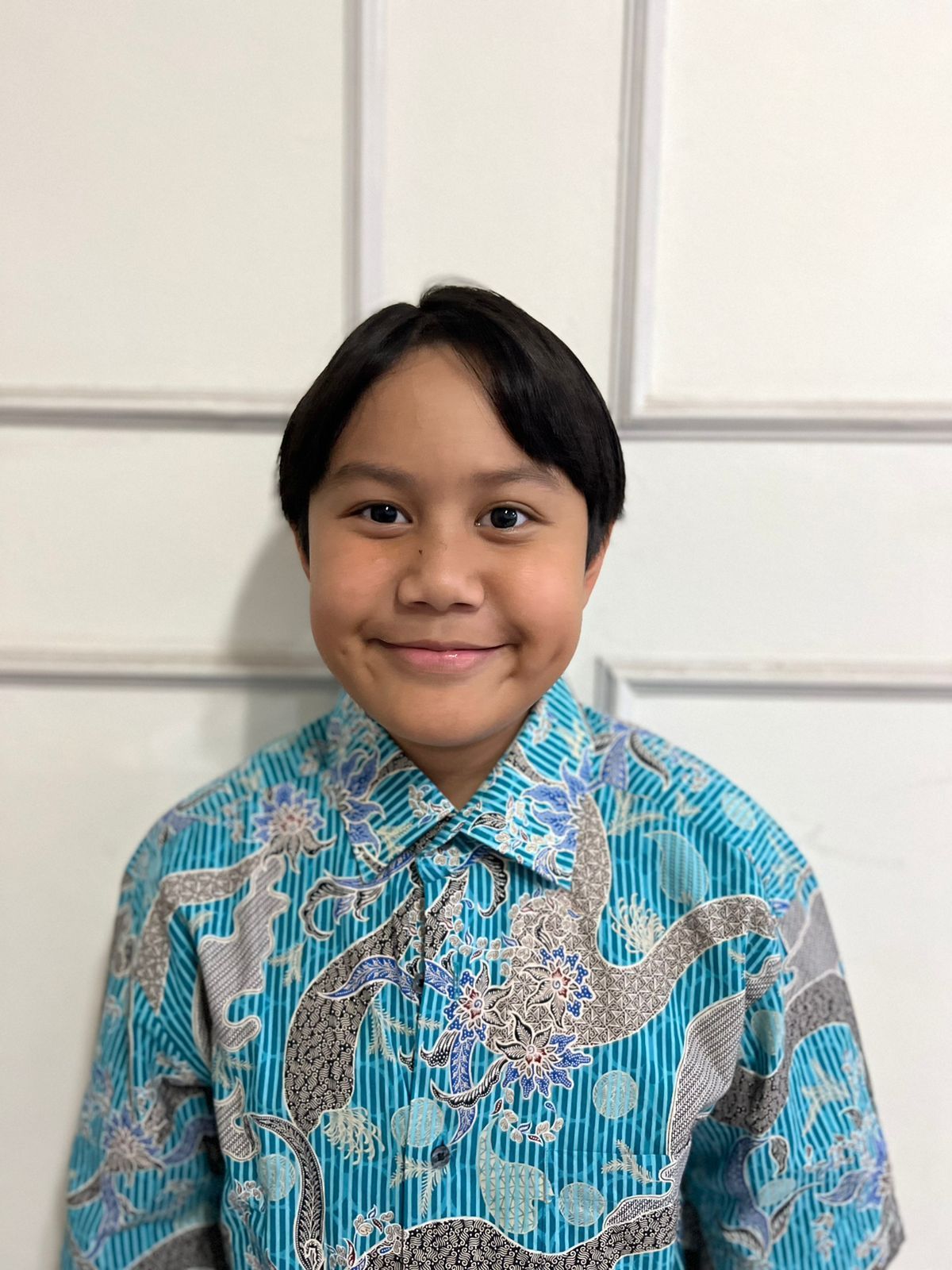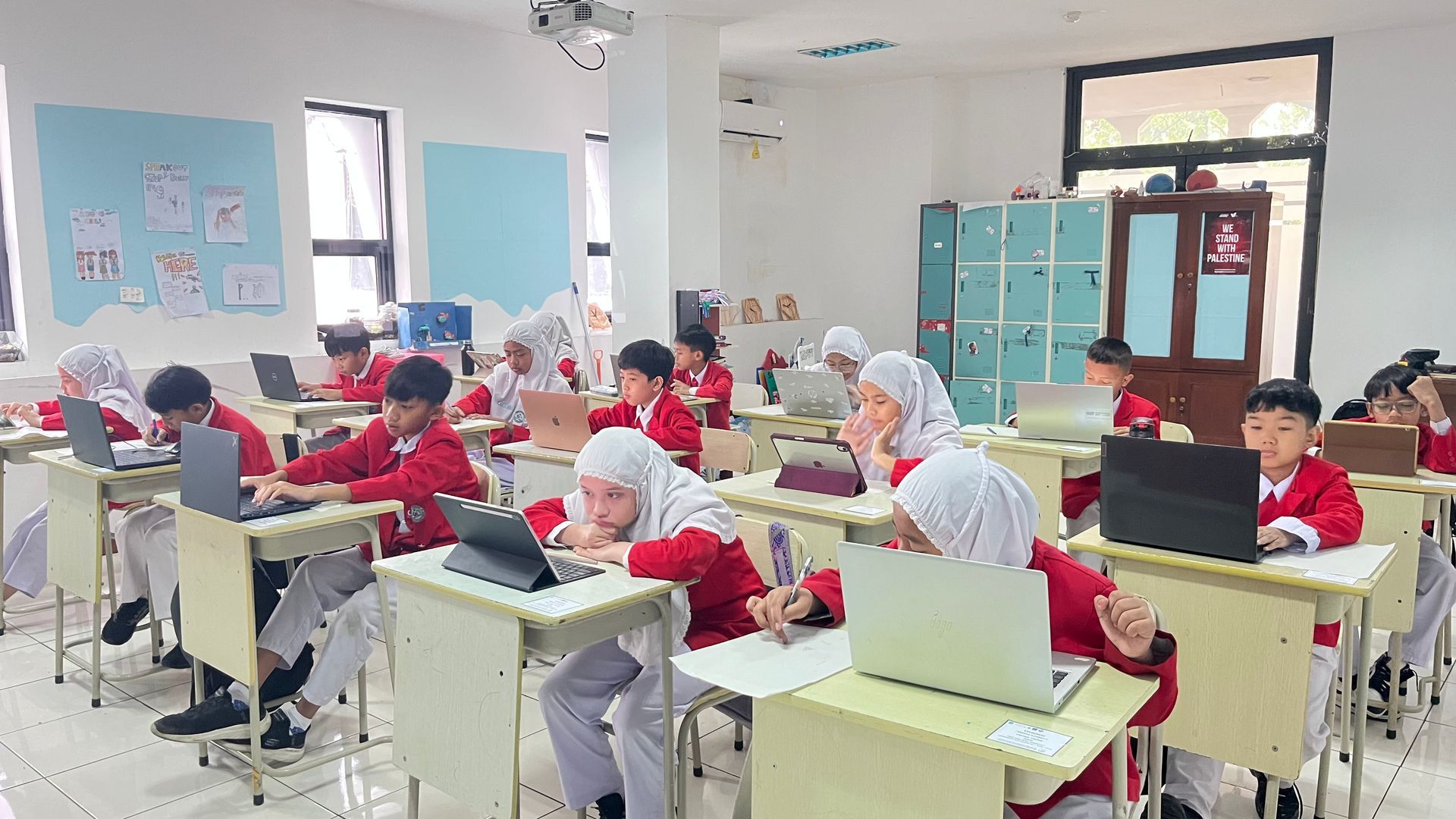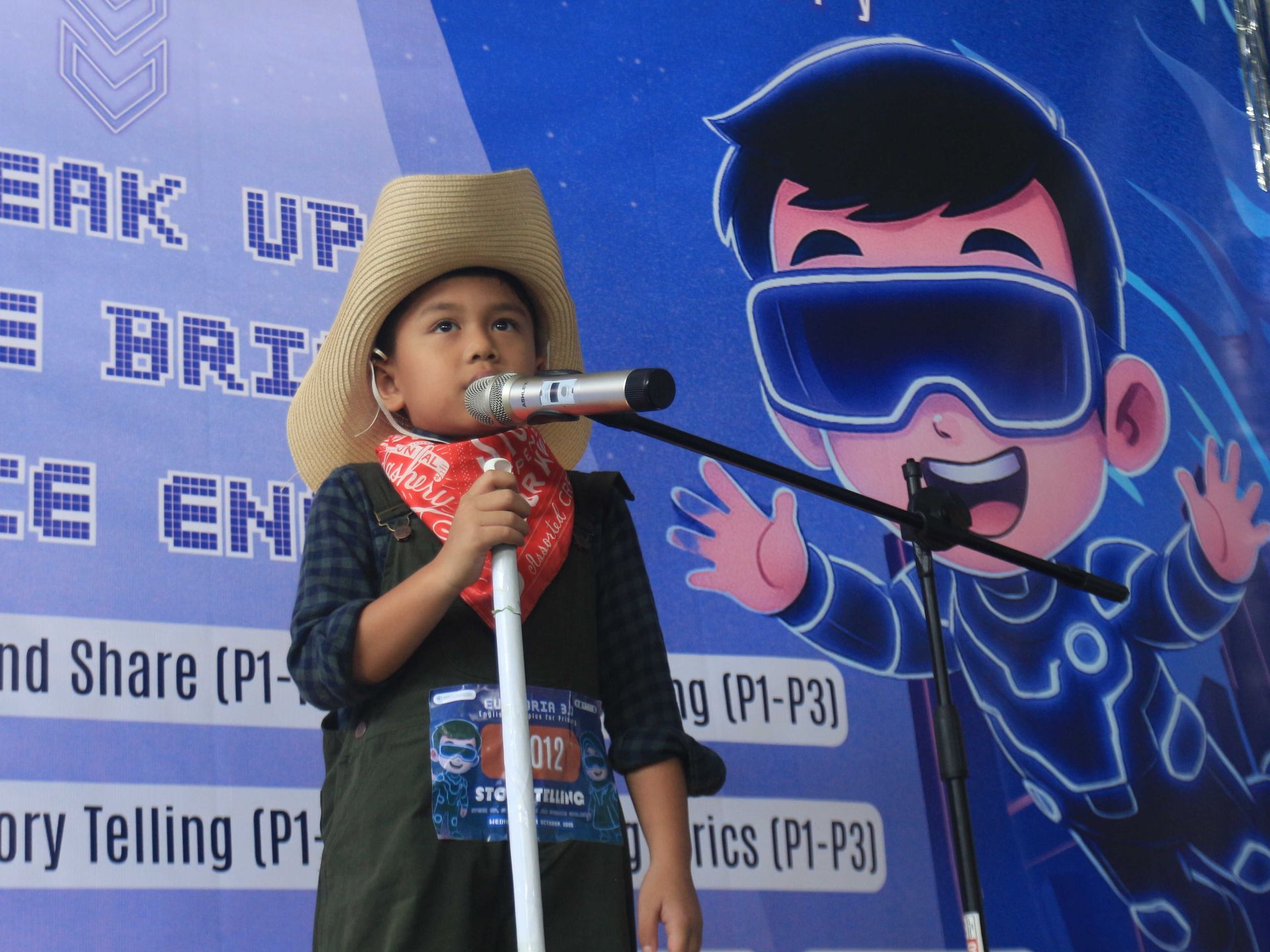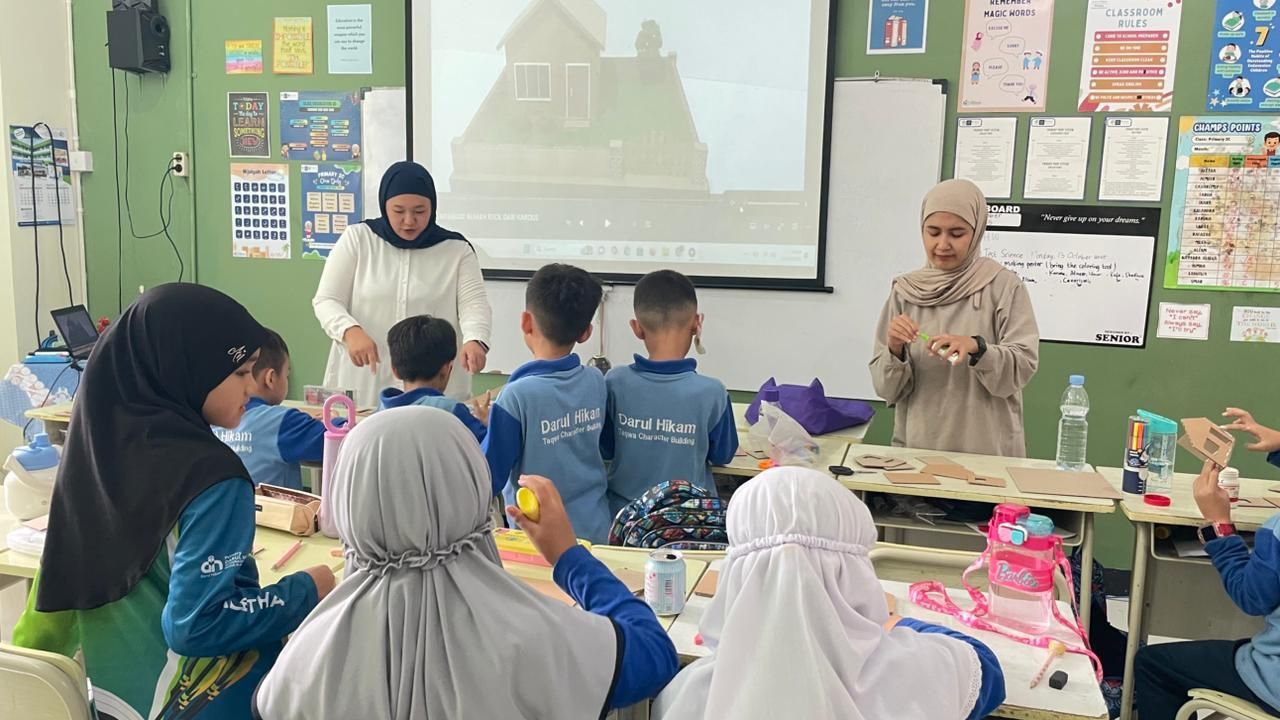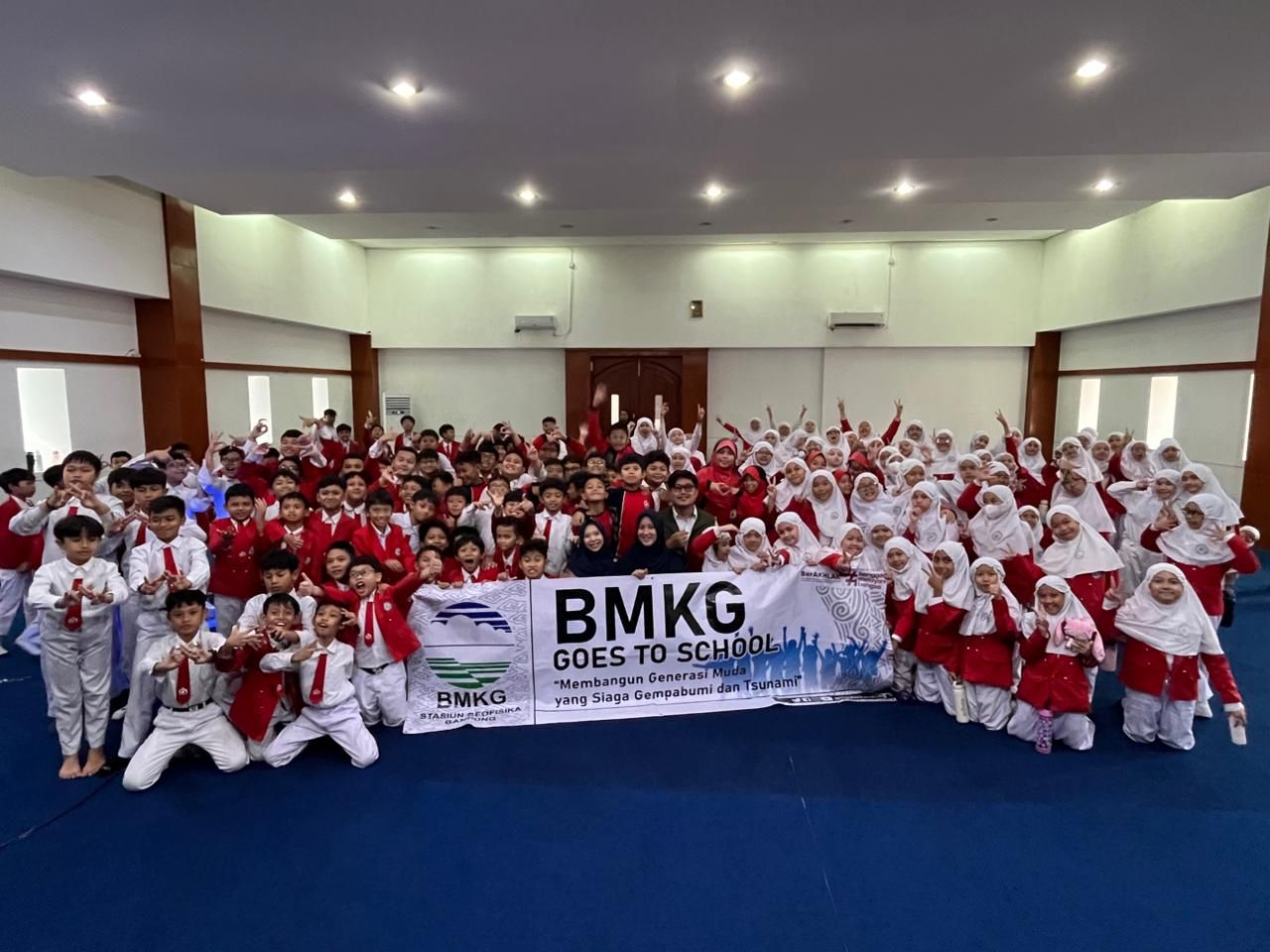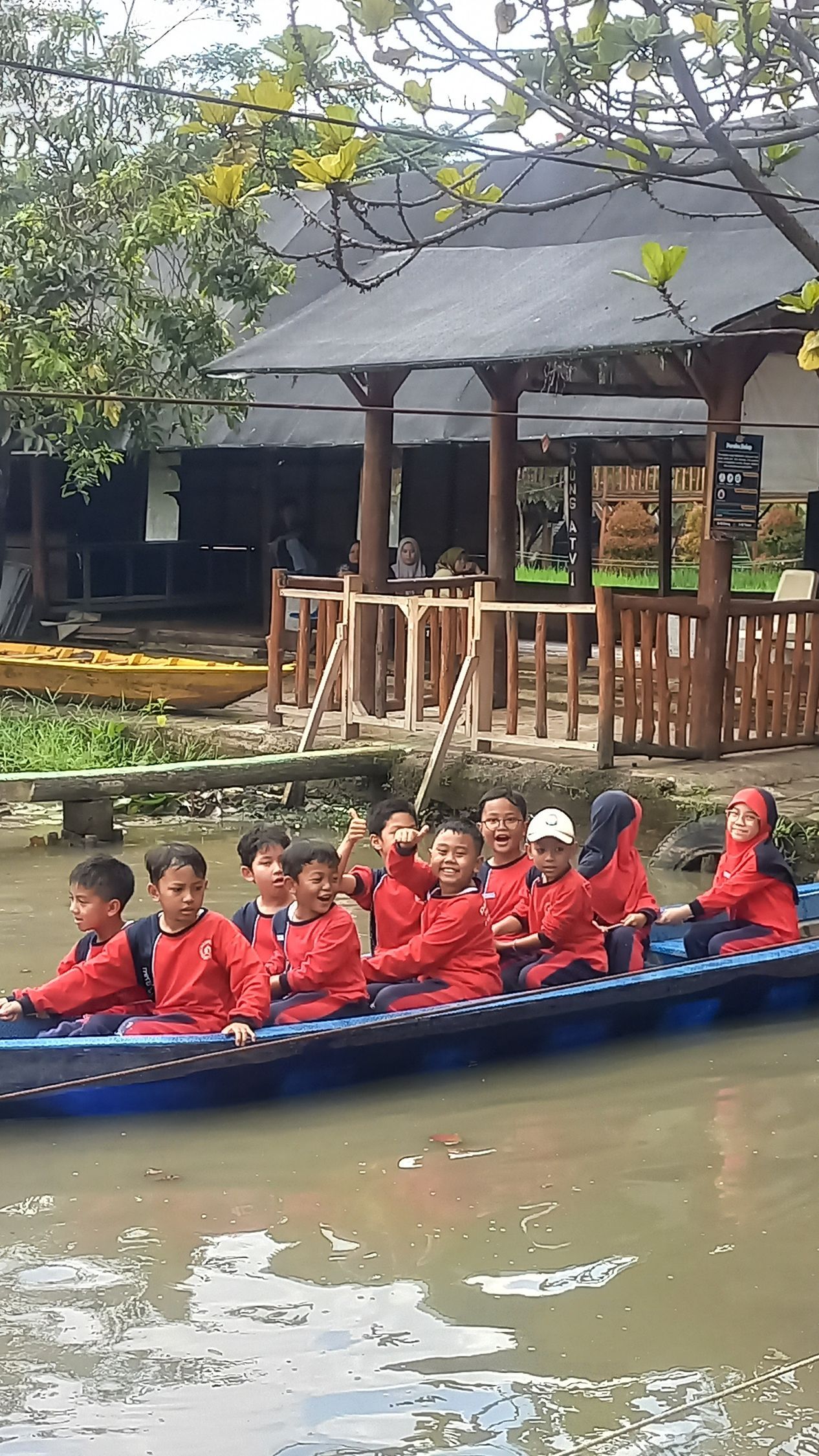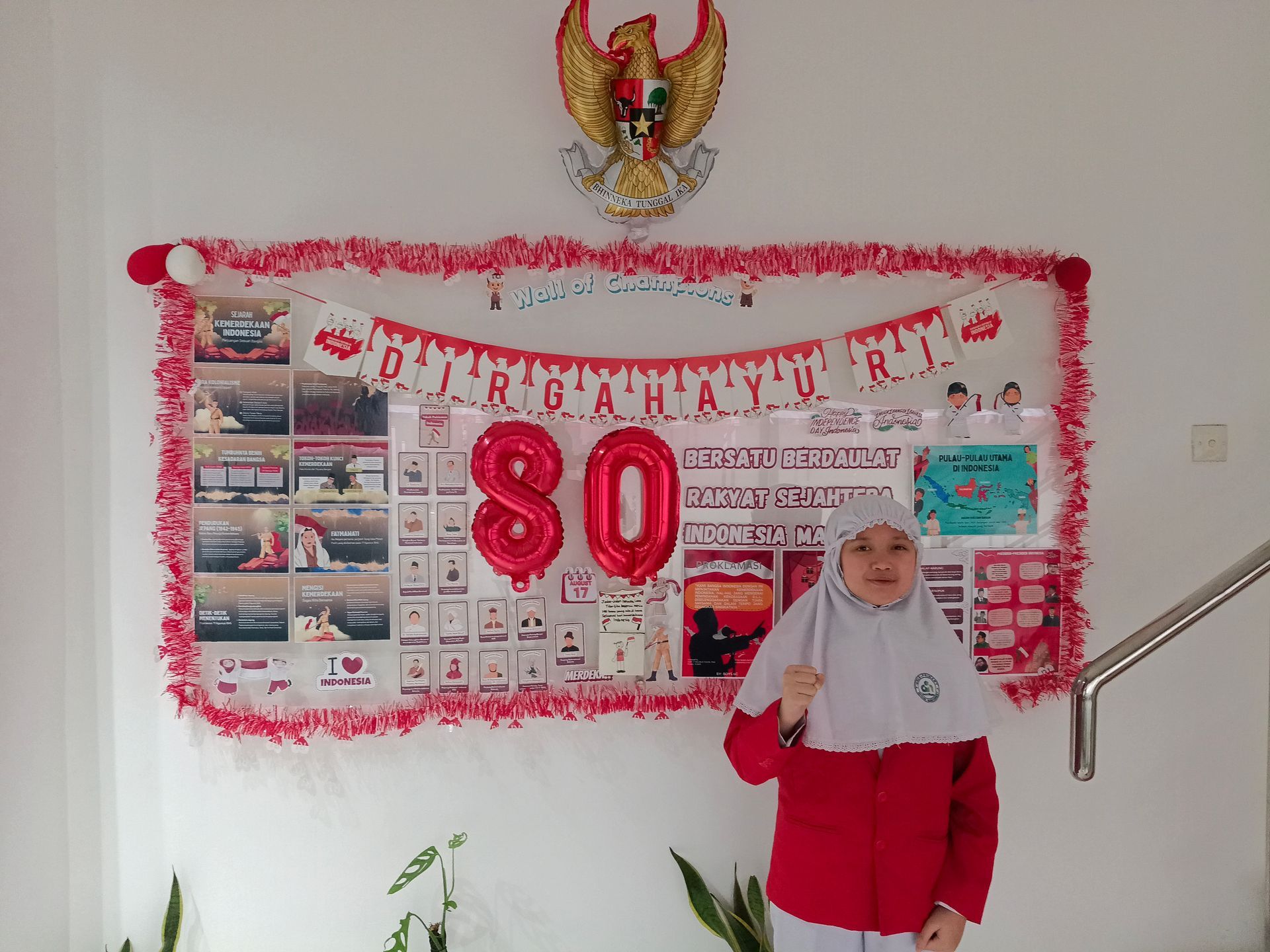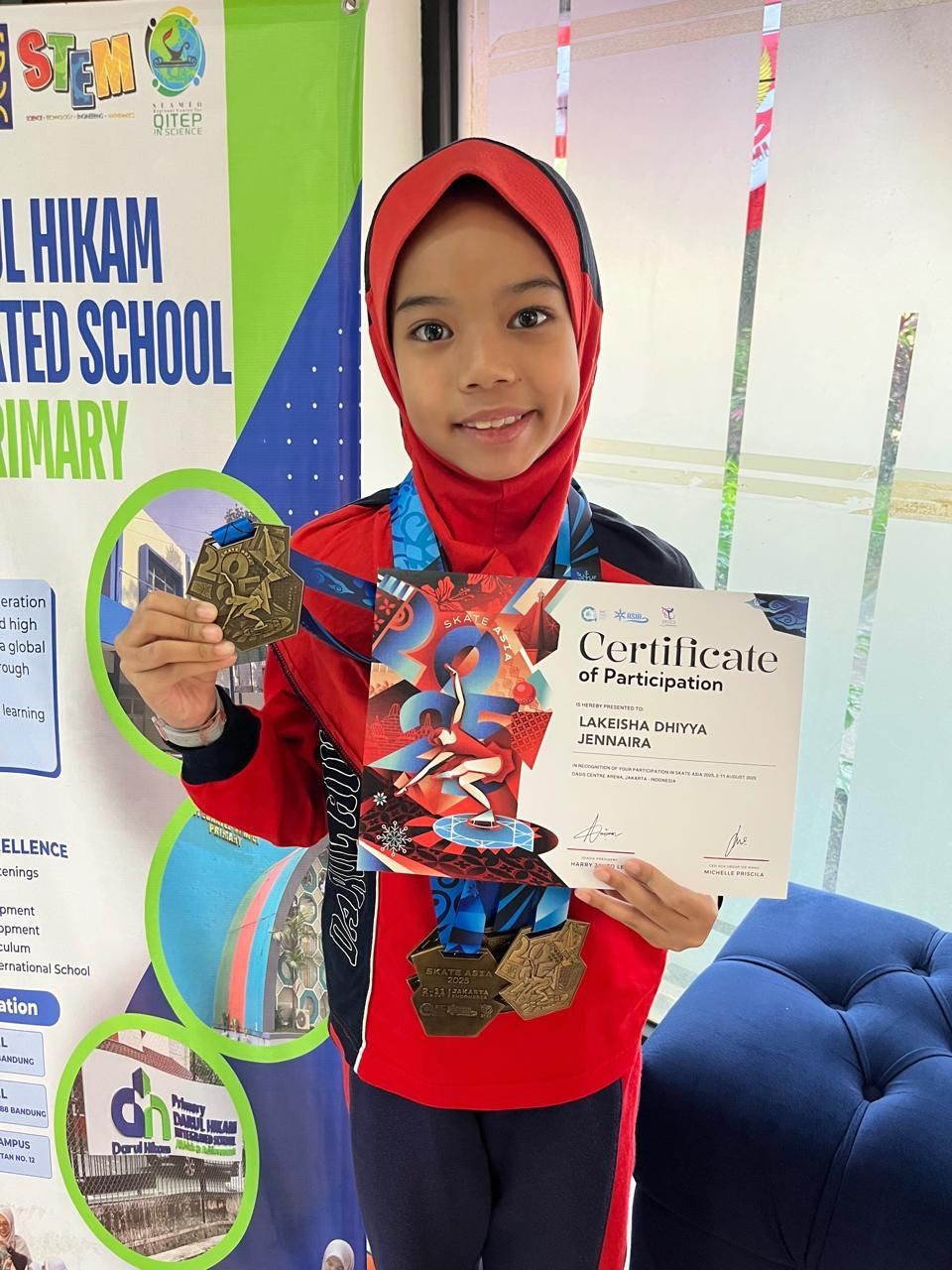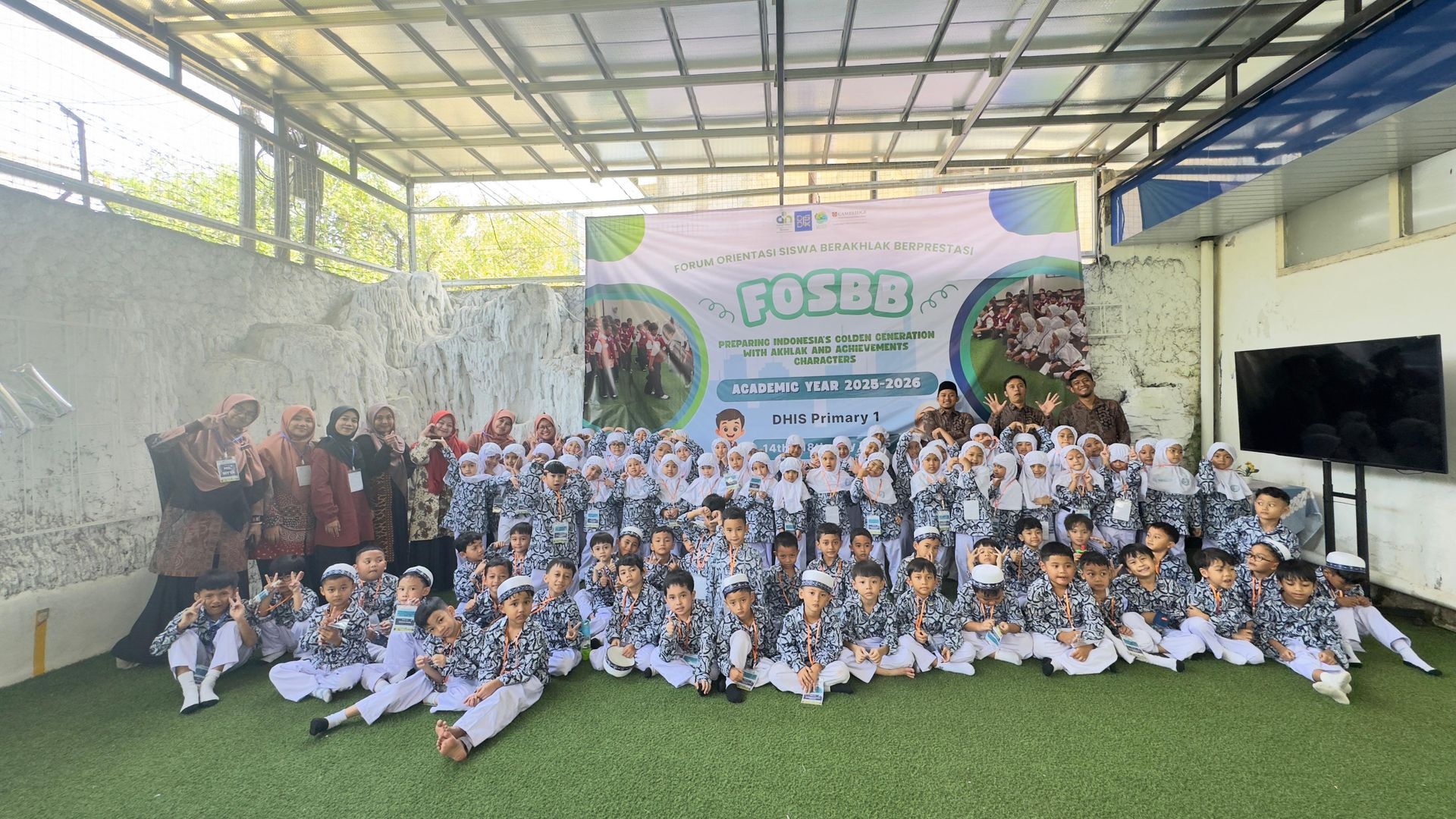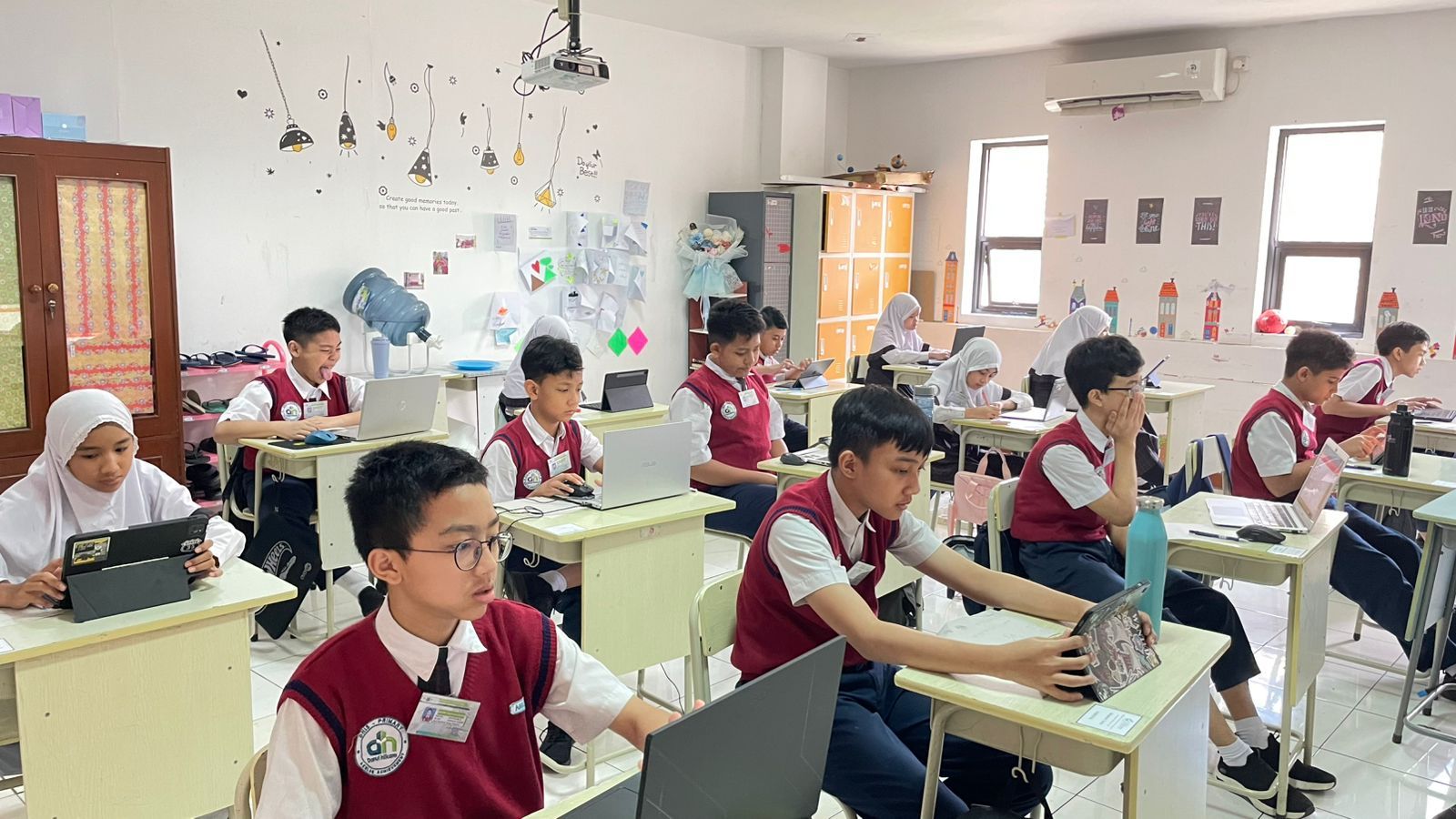By Lakeisha Dhiyya Jennaira (4C)
•
July 23, 2025
Hi! My name is Lakeisha Dhiyya Jennaira, but you can call me Jenna. I am 9 years old and currently a 4th-grade student at Darul Hikam Integrated School - Primary. Besides being a student, I am also a figure skating athlete. I proudly represent West Java & our lovely country Indonesia, and Garden Ice Skating Club Academy at some National and International Ice Skating Competitions. Figure skating is very special to me. I love it because it combines dancing, movement, and expression in such a graceful way. Since this sport is still quite rare in Indonesia, I feel motivated to explore it deeply and hopefully inspire more young people to try it. Of course, skating is not always easy. There are so many challenges, especially when it comes to learning new elements on the ice. But I actually enjoy challenges, it makes me stronger and more determined to improve. To support my performance on the rink, I also train off the ice. I do independent gym sessions, pilates, and other exercises regularly. Consistency is very important because strong physical training helps me skate better. I am very grateful to have three amazing coaches in Bandung who always support me. Thanks to them, I’ve been able to prepare for competitions and grow as a skater. I really love joining competitions because they give me the chance to perform, to show my choreography on ice, and to share my passion with an audience. Competitions also teach me valuable lessons such as staying calm, being powerful, and connecting with the music so that I can give my best performance. For me, figure skating is not only about technique, but also about challenging myself and enjoying the moment on the ice. So far, I have joined many competitions. My very first international competition was Skate Asia 2023 in Hong Kong. Alhamdulillah, I won two gold medals—one in the Technical Delta category and another in the Spotlight Character category. That was such a proud moment because I could represent both my club and Indonesia. In June 2024, I had another unforgettable experience when I represented Indonesia at the Madani Cup (Malaysia National Open Figure Skating Championship). Once again, Alhamdulillah, I brought home a gold medal. I have also joined several competitions in Jakarta under the ISI Asia Series, and I was honored to participate in the Indonesia National Championship PON Exhibition XXI 2024. That was my very first national-level competition, and I competed in Starlet 1 Level. The atmosphere was intense, and the other skaters were amazing. Alhamdulillah, I won a gold medal among 10 participants. I felt so grateful, not only because I won, but also because I proved to myself that I could rise to the challenge. In 2025, my journey continued. In April, I competed in the Indonesia National Championship in Jakarta, this time stepping up to the Pre-Preliminary Level, which is two levels higher than my previous national competition. It was tough! I had to perform the axel jump, one of the most challenging elements in figure skating. An axel requires you to rotate one and a half times in the air before landing. Unfortunately, I fell during my first axel attempt, which made me very sad and disappointed. I finished in 5th place out of 18 skaters. At first, I felt crushed because I had practiced so hard and believed I could land it perfectly. But my parents reminded me that in life there are always ups and downs. Falling is not the end, it’s a chance to stand up stronger. That experience taught me resilience, humility, and the importance of trusting Allah’s plan. Even though I didn’t get the result I wanted, I know it made me grow mentally and emotionally. Then, in August 2025, I joined Skate Asia again, this time held in Jakarta. Alhamdulillah, I had an amazing competition and won five gold medals and one silver medal. I was so happy to compete with talented skaters from all over Asia. It was a beautiful reminder that hard work, persistence, and faith always pay off in the end. Looking ahead, I am very excited for more competitions. I want to keep improving, perform even better, and most importantly, enjoy every moment on the ice. My dream is to represent Indonesia in bigger international events and inspire others to believe that nothing is impossible with dedication and passion. Lastly, I want to say how grateful I am to be part of DHIS. To Miss Ati, Mr. Bayu, Mr. Khan, Miss Silvy, Miss Yennie, Miss Delela, and all my teachers and friends—thank you so much for your endless support and prayers. It really means the world to me. I know I could not have achieved all of this without your encouragement and kindness. I truly love skating, and I know I will always love it. Thank you for supporting my journey. With love, Jenna ✨⛸️
